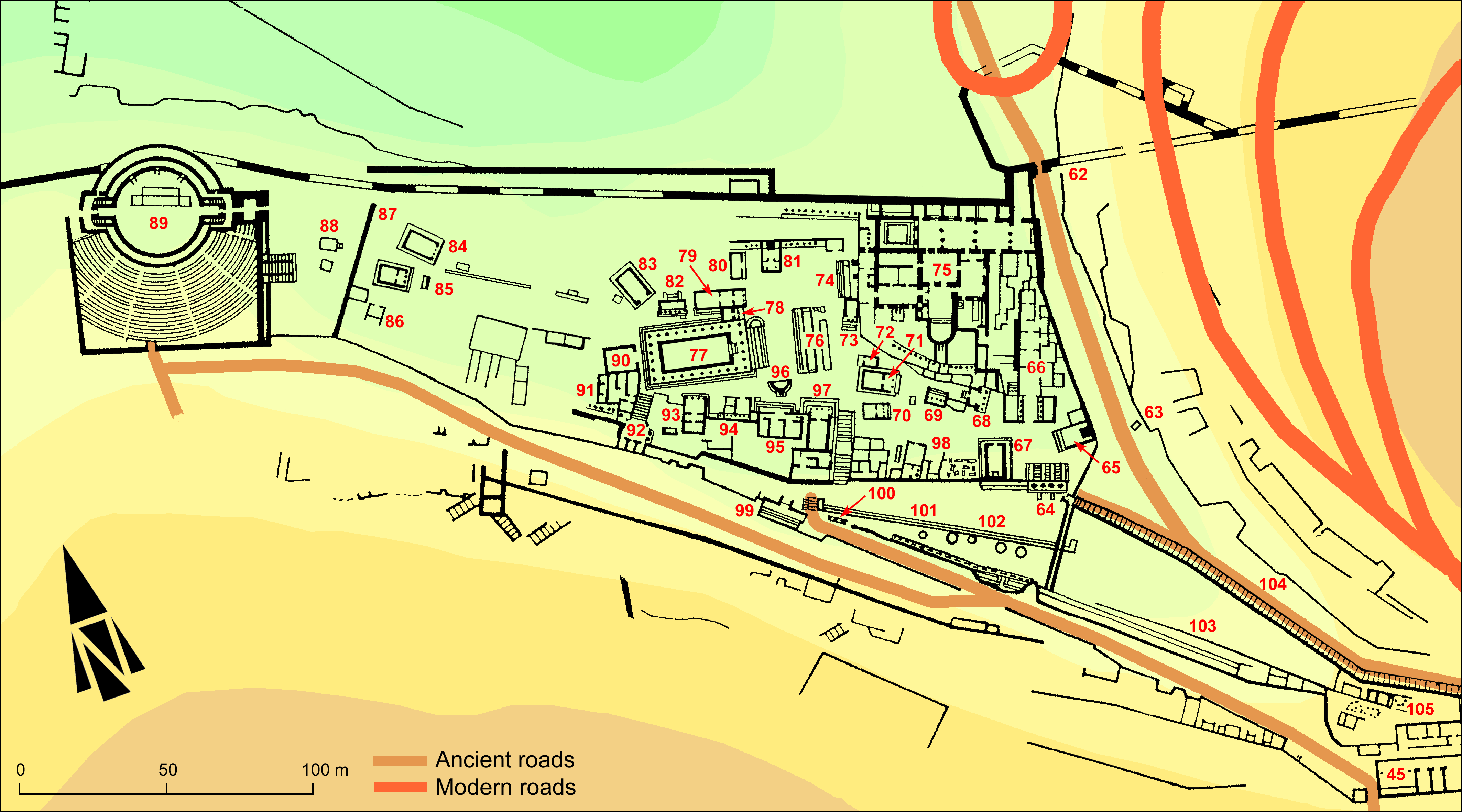EpiDoc XML:
IGCyr0962002
Trismegistos ID:
738472
Source description
Support: White marble rectangular base with a hole on top, broken off at back and at both lower angles (w: 0.41 × h: 0.10 × d: 0.20).
Layout: Inscribed on front face in three lines symmetrically displayed along vertical axis; however in the second half of l. 1 the letters are more pressed close to one another.
Letters: 0.01; no serifs, alpha with dropped bar, smaller theta and omicron, xi with central vertical stroke, rho with small loop, non-slanting sigma, calice-shaped upsilon, very small loop of phi.
Date: Probably second century BC (lettering).
Findspot: Found by G. Oliverio in 1925 at Cyrene ➚: in the Sanctuary of Apollo.
Place of origin: Findspot.
Last recorded location: Cyrene Museum, 255. Seen by Pugliese Carratelli in 1960 in Shahat: Cyrene Museum. Seen by C. Dobias-Lalou in 1976 at the same place.
Text constituted from: Transcription from stone (CDL).
Bibliography
Oliverio 1927, p. 157 (mention of find); Oliverio , XI.70, whence SECir, 52; IGCyr 096200 ➚.
Cf. Robert, BE, 1964.562; Dobias-Lalou 2020, pp. 59-60, note 19.
Text
Apparatus
2: Βασώ SECir: Βασῶ Robert, BE from the Roberts' commentary
French translation
Aiskhinès fils de Sôsarkhos, Kallikleia fille de Xouthos et Basô fille d'Aiskhinès ont consacré (scil. ce monument) aux Muses et aux Nymphes.
English translation
Aischines son of Sosarchos, Kallikleia daughter of Xouthos and Baso daughter of Aischines dedicated (scil. this monument) to the Muses and to the Nymphs.
Italian translation
Aischines figlio di Sosarchos, Kallikleia figlia di Xouthos e Basò figlia di Aischines hanno dedicato (scil. questo monumento) alle Muse e alle Ninfe.
Commentary
The father's names show that Baso was the daughter of Aischines and Kallikleia. However, her role in the dedication is ambiguous. Two readings are possible for a name written ΒΑΣΩ, either a nominative Βασώ or an accusative Βασῶ. Pugliese Carratelli printed the nominative reading, which was clearly Oliverio's option, as he had already mentioned the find (Oliverio 1927, p. 157) as a dedication made by 'la famiglia di Eschine figlio di Sosarco'. This position was endorsed by C. Dobias-Lalou at Dobias-Lalou 2000, p.98. Conversely, J. and L. Robert had opted for an accusative, thus a dedication of the statue of the girl by her parents. In fact Muses and Nymphs would be the right patronesses for a young girl. However a circular hole on top of this small and low base would not support a statue and, besides, in dedications of (a statue of) a person by another person, the honoured person's name precedes usually the dedicant. Discussed again by Dobias-Lalou 2020.
CC BY-NC-SA 4.0 Deed Attribution-NonCommercial-ShareAlike 4.0 International License.
All citation, reuse or distribution of this work must contain a link back to DOI: https://doi.org/10.60760/unibo/igcyrgvcyr2 and the filename (IGCyr000000 or GVCyr000), as well as the year of consultation.


